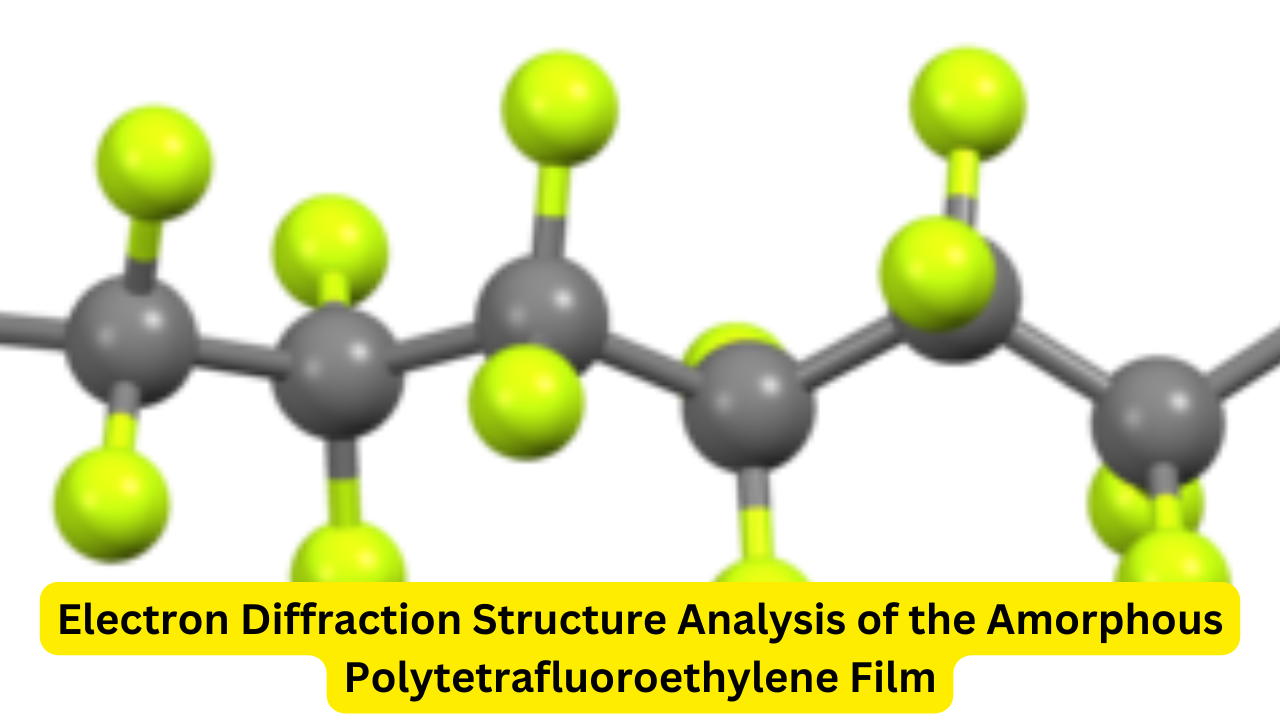Polytetrafluoroethylene, Electron Diffraction Structure Analysis of the Amorphous

Polytetrafluoroethylene, Electron Diffraction Structure Analysis of the Amorphous. Polytetrafluoroethylene (PTFE), commonly known as Teflon, is a high-performance fluoropolymer widely used for its unique properties such as chemical resistance, low friction, and high thermal stability. One of the intriguing aspects of PTFE is its amorphous film structure, which can be analyzed using electron diffraction structure analysis. This article delves into the detailed methodology and findings of the electron diffraction structure analysis of the amorphous polytetrafluoroethylene film.
The electron diffraction structure analysis of the amorphous polytetrafluoroethylene film provides valuable insights into its unique atomic arrangement. The adapted technique, which accounts for the rigid helical conformation and partial long-range order, ensures accurate representation of the PTFE structure. These findings have significant implications for enhancing material properties and developing new applications for PTFE.
Understanding Polytetrafluoroethylene (PTFE)
Polytetrafluoroethylene is a synthetic fluoropolymer of tetrafluoroethylene that boasts remarkable properties. These properties make PTFE ideal for a wide range of applications, from non-stick cookware to medical devices and industrial components. However, the amorphous film of PTFE presents unique structural characteristics that are best studied through electron diffraction.
Electron Diffraction Structure Analysis: An Overview
Electron diffraction is a powerful technique for studying the atomic structure of materials. It involves directing a beam of electrons at a sample and observing the resulting diffraction pattern. This pattern provides information about the arrangement of atoms within the material. For amorphous materials like PTFE, electron diffraction helps in constructing atomic radial distribution functions.
Methodology: Constructing Atomic Radial Distribution Functions
The process of constructing atomic radial distribution functions from electron diffraction patterns involves several steps. The previously developed method is based on determining the normalization factor by varying the thermal parameter. This technique is crucial for understanding the structure of amorphous PTFE due to its unique polymer chain conformation.
Sample Preparation
A thin amorphous fluoroplast (polytetrafluoroethylene) film is obtained and prepared for analysis. The preparation involves ensuring the film is free from contaminants and has the required thickness for electron diffraction.
Electron Diffraction Pattern Acquisition
Measurements are performed using the developed registration system on an EMR-102 electron diffractometer. This system is capable of capturing high-resolution electron diffraction patterns, which are essential for detailed structural analysis.
Normalization Factor and Thermal Parameter Variation
To construct accurate atomic radial distribution functions, the normalization factor is determined by varying the thermal parameter. This step is critical as it accounts for the thermal vibrations of atoms, ensuring that the resulting distribution functions accurately represent the atomic structure.
Unique Structural Characteristics of Amorphous PTFE
Amorphous PTFE exhibits a rigid helical conformation of polymer chains, specifically the –CF2– segments. This conformation leads to a structure that cannot be described as completely amorphous due to the partial long-range order along the helix axis. This unique characteristic necessitates special adaptation of the electron diffraction analysis technique.
Helical Conformation and Long-Range Order
The rigid helical conformation of PTFE chains results in a unique arrangement of atoms. Unlike fully amorphous materials, PTFE retains some degree of long-range order along the helix axis. This partial order influences the diffraction patterns and must be considered when constructing atomic radial distribution functions.
Impact on Electron Diffraction Patterns
The helical conformation affects the electron diffraction patterns, producing distinct features that differ from those of fully amorphous materials. These features provide insights into the arrangement of –CF2– segments and the overall structure of the PTFE film.
Adaptation of Electron Diffraction Technique for PTFE
Given the unique structure of amorphous PTFE, the electron diffraction technique must be adapted accordingly. This involves modifications to the analysis process to account for the helical conformation and the partial long-range order.
Enhanced Analysis Techniques
Enhancements to the electron diffraction analysis technique include improved data processing algorithms and the use of advanced normalization procedures. These enhancements ensure accurate representation of the PTFE structure in the resulting radial distribution functions.
Validation and Verification
To validate the adapted technique, comparative studies with known PTFE structures are conducted. These studies confirm the accuracy and reliability of the adapted electron diffraction analysis method for amorphous PTFE films.
Applications and Implications of the Study
The findings from the electron diffraction structure analysis of amorphous PTFE have significant implications for various applications. Understanding the unique structure of PTFE can lead to improved material properties and new applications in diverse fields.
Enhanced Material Properties
By understanding the atomic structure of amorphous PTFE, researchers can develop methods to enhance its properties further. This includes improving its thermal stability, chemical resistance, and mechanical strength.
New Applications
The unique characteristics of amorphous PTFE can lead to innovative applications in fields such as electronics, aerospace, and biomedical engineering. The ability to tailor the material’s properties based on its atomic structure opens up new possibilities for its use.
Conclusion
The electron diffraction structure analysis of the amorphous polytetrafluoroethylene film provides valuable insights into its unique atomic arrangement. The adapted technique, which accounts for the rigid helical conformation and partial long-range order, ensures accurate representation of the PTFE structure. These findings have significant implications for enhancing material properties and developing new applications for PTFE.




